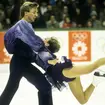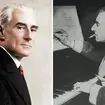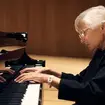Discovering Ravel
Despite his outward punctiliousness in all areas of his life, Ravel’s music contains a fascinating depth of passion, experimentation and exoticism.
Maurice Ravel was a meticulous craftsman, the fastidious creator of some of the most exquisite music ever composed. He believed that there was a perfect solution to every musical problem and that it was his responsibility to polish each new piece until it sparkled like a piece of iridescent jewellery.
This attention to detail extended to all parameters of his life. He was always immaculately presented, wearing the latest snappy fashions topped off by a pair of black patent leather shoes that he couldn’t bear to be parted from.
Ravel’s dealings with people were invariably cordial and polite, yet he seems never to have become really intimate with anyone. He didn’t marry, and although his somewhat dandyish appearance and notoriously secret private life led some to speculate wildly about his sexual leanings, by his own admission Ravel found the whole idea of entering into impassioned relationships distasteful.
Like anyone else, however, he had his emotional security blankets: he adored animals (particularly cats), children (as long as they weren’t his own), communing with nature and all things mechanical (especially toys).
Stravinsky once referred to Ravel as “the most perfect of Swiss clockmakers”, and in a sense he was right. Yet the cool exterior and careful organisation of Ravel’s day-to-day existence was little more than a façade behind which lay a personality of extraordinary complexity and passion. Ravel declared himself “of the same type as the Romantics”, while emphasising that “one doesn’t need to open one’s chest to show that one has a heart”.
And therein lies the paradox and the clue to Ravel’s musical indestructibility. If you choose to play it cool with a work like Boléro, its remorseless forward momentum is still mesmerising. But if you really get under the music’s skin, revelling in its hints of decadent jazz and erotic Hispanic sensuality set against the mechanised onslaught of an orchestral army, the effect is devastating. Ravel – a cold, calculating, manipulator of sound? Nothing could be further from the truth.
Ravel inherited an interest in all things mechanical from his father, Pierre, an engineer and inventor who was responsible for, among other things, a motorcar that turned somersaults. His mother, Marie, was of Basque origin, which was a contributing factor to the many Spanish-influenced pieces he produced in later life. From an early age it was music that fired his enthusiasm and at just 14 years old he won a place at the Paris Conservatoire. Although Ravel was neither academically very gifted nor a pianist of any great distinction, his dedication to composing was absolute.
He left the Conservatoire in 1895 and devoted himself to writing music, producing, among others, the enchanting Menuet antique. Two years later, he returned to the Conservatoire and enrolled in composition lessons with Fauré, who was a sympathetic and encouraging teacher. But Ravel’s unorthodox style put him on a collision course with the Conservatoire’s notoriously conservative director, Théodore Dubois.
Incredibly, year after year, the Conservatoire, with Dubois at the helm, refused to award Ravel its most prestigious composition prize, the Prix de Rome. By now the budding young composer had a considerable following in the wake of such early masterpieces as the heavenly Pavane Pour Une Infante Défunte, Jeux d’eau (a glitteringly inventive piece for solo piano), the String Quartet and the ravishingly exotic song cycle, Shéhérazade.
In 1905 he was in full flow, composing the inventive and seductive Sonatine and Miroirs (both for piano) and the Introduction et Allegro (one of the finest-ever works for the harp), among others. Again he entered the Prix de Rome, only to be eliminated in the first round with the stern warning from Dubois that “Ravel may look upon us as old fogies if he pleases, but he will not with impunity make fools of us.”
But this time Dubois had gone too far. There was public outcry at what the newspapers were now calling the “Ravel Affair” and Dubois was forced to stand down, passing on the directorship to Fauré. The resulting publicity did Ravel no harm at all and he soon found himself moving in fashionable circles, widely recognised as both the natural successor to Debussy and France’s most celebrated young composer. Riding on a wave of popular success, Ravel began producing a series of remarkably varied scores that took the French musical world by storm.
First up was the glittering orchestral Rapsodie Espagnole (1907-08). No one had ever heard anything quite like the opening ‘Prélude à la Nuit’, which simmers seductively in the evening air, a tantalising sequence of half-whispered confidences receding dreamily into the distance. Then there’s the ‘Malagueña’ followed by the sultry ‘Habañéra’, which emerges as if through a heat-haze, while the ‘Feria’ finale is all brilliant sunshine, an unquenchable orchestral celebration of the Hispanic world.
Ravel then pushed Lisztian piano virtuosity to its furthest reaches in the demonic ‘Scarbo’, the final section of Gaspard de la Nuit (1908). Always on the look-out for new challenges, he re-engaged with the sensations and memories of childhood in Ma Mère l’oye (‘Mother Goose’), arguably the most perfect score by this most outwardly “perfect” of composers.
By now some observers were insisting that Ravel had actually stolen all his ideas from Debussy. Ravel appeared to rise above such criticism, but in a gentle attempt to get his own back he arranged for the premiere of his Valses Nobles et Sentimentales (1911) to be premiered anonymously, with distinguished critics invited to hazard a guess at the composer.
To Ravel’s great satisfaction Debussy’s name was barely mentioned; one critic, not entirely unreasonably, suggested Satie, but rather bewilderingly one of Ravel’s most vociferous detractors plumped for Kodály. Ravel’s point had been well and truly made. Meanwhile, the hits continued with two more contrasting works: Daphnis et Chloé (1912), a voluptuously sensual ballet score, and the neo-classical poignant Piano Trio (1914).
Just as Ravel was at the height of his powers, the First World War broke out; it caused him such distress that a number of planned projects never came to fruition. Desperate to join his fellow Frenchmen in the field, Ravel was frustrated by not being able to fight due to his small stature (he was five foot four), although he did drive military vehicles for a while at the Verdun front. He lost countless friends during the War, some of whom he remembered in the piano suite Le Tombeau de Couperin – each of the six movements is dedicated to the memory of a friend. This desperate situation was compounded by the deaths of both his beloved mother and Debussy.
Ravel’s despairing outlook is evident in La Valse (1919-20), a pessimistic work in which the dancers emerge out of the swirling mists, innocently at first, until a manic quality begins to take hold eventually driving the whole thing into oblivion.
Feeling decimated and emotionally vulnerable, Ravel withdrew from Paris and took up residence in Monfort-l’Amaury, which would remain his home to the end of his days. His career continued as before, albeit at a slower compositional rate, with the first recordings of his music being issued, constant demands for personal appearances as both conductor and pianist, and a trip to America in 1928. Here he experienced jazz first-hand and memorably turned down Gershwin’s request for lessons, insisting that instead of composing “first-rate Gershwin” the American might end up writing “second-rate Ravel”!
Creatively speaking, Ravel found it increasingly difficult to connect with the child-like world of innocence that had coloured so much of his pre-War music. Whatever the incidental delights of his opera L’enfant et Les Sortilèges, the Tzigane for violin and orchestra, the Boléro and the masterly orchestration of Mussorgsky’s Pictures At An Exhibition, one senses an emotional reserve that wasn’t present before.
There are signs of a glorious recovery in the two piano concertos (1929-30), but for the most part the remainder of Ravel’s life was plagued by a neurological disorder that increasingly affected his speech and motor impulses. After an unsuccessful operation in 1937, France’s celebrated composer passed away.
Ravel was buried in the Cimetière de Levallois-Perret in the north of Paris, in a grave beside his parents. It is an unassuming black marble affair inscribed merely “Compositeur Français”. Interestingly, the only other celebrity to have been buried in this relatively small cemetery is the designer of the famous tower, Gustave Eiffel.
DEFINING MOMENT
Miroirs is a virtuoso collection of five pieces, none of which are for the faint-hearted. Most famous is the Alborada del Gracioso, which the composer later orchestrated. Here Ravel basks in Spanish dance rhythms, turning the pianist into a one-man street band. The opening suggests a matador strutting his stuff, then the castanets start playing [A] with guitar accompaniment [B] and the pianist’s fingers go into meltdown. Each semi-quaver has to be played by a different finger, otherwise the piano’s hammer mechanism just won’t respond!



















